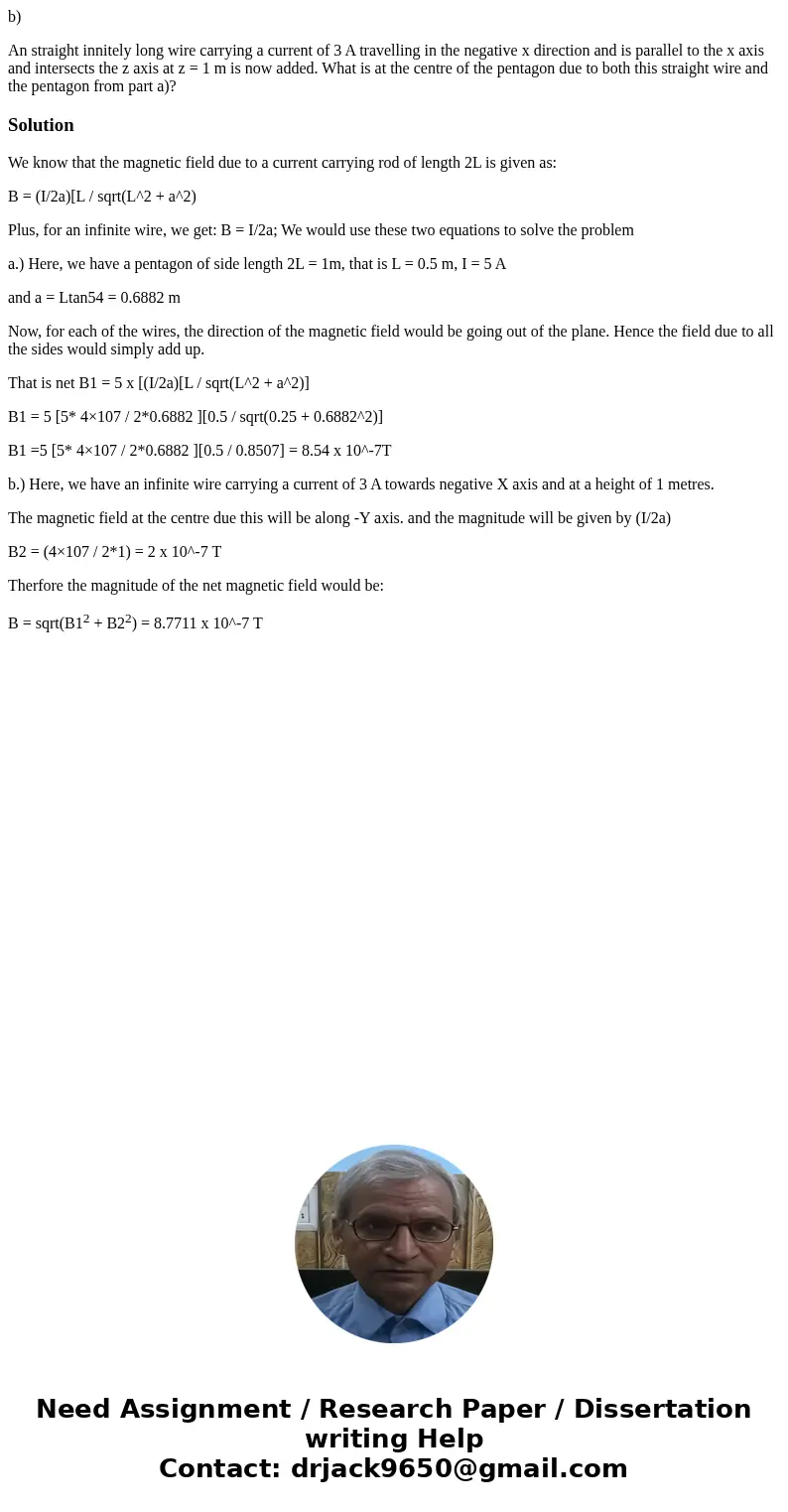b An straight innitely long wire carrying a current of 3 A t
b)
An straight innitely long wire carrying a current of 3 A travelling in the negative x direction and is parallel to the x axis and intersects the z axis at z = 1 m is now added. What is at the centre of the pentagon due to both this straight wire and the pentagon from part a)?
Solution
We know that the magnetic field due to a current carrying rod of length 2L is given as:
B = (I/2a)[L / sqrt(L^2 + a^2)
Plus, for an infinite wire, we get: B = I/2a; We would use these two equations to solve the problem
a.) Here, we have a pentagon of side length 2L = 1m, that is L = 0.5 m, I = 5 A
and a = Ltan54 = 0.6882 m
Now, for each of the wires, the direction of the magnetic field would be going out of the plane. Hence the field due to all the sides would simply add up.
That is net B1 = 5 x [(I/2a)[L / sqrt(L^2 + a^2)]
B1 = 5 [5* 4×107 / 2*0.6882 ][0.5 / sqrt(0.25 + 0.6882^2)]
B1 =5 [5* 4×107 / 2*0.6882 ][0.5 / 0.8507] = 8.54 x 10^-7T
b.) Here, we have an infinite wire carrying a current of 3 A towards negative X axis and at a height of 1 metres.
The magnetic field at the centre due this will be along -Y axis. and the magnitude will be given by (I/2a)
B2 = (4×107 / 2*1) = 2 x 10^-7 T
Therfore the magnitude of the net magnetic field would be:
B = sqrt(B12 + B22) = 8.7711 x 10^-7 T

 Homework Sourse
Homework Sourse